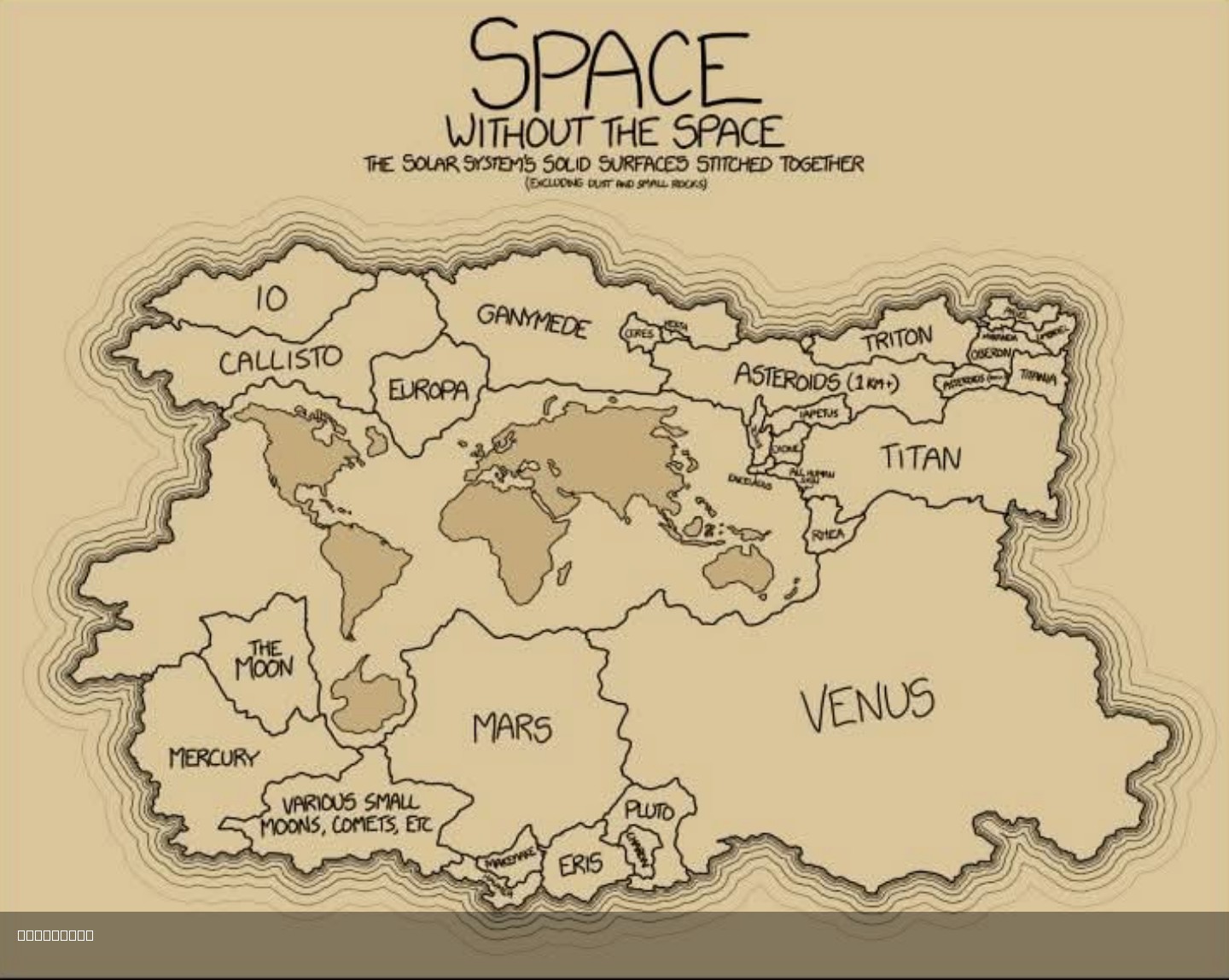Map of All Land in Our Solar System


Alex Cartwright
Senior Cartographer & GIS Specialist
Alex Cartwright is a renowned cartographer and geographic information systems specialist with over 15 years of experience in spatial analysis and data...
Geographic Analysis
What This Map Shows
This visualization presents an incredibly unique perspective: a comprehensive map showcasing all the landmasses found throughout our solar system. While Earth is home to a diverse array of landscapes, it’s fascinating to consider the geological features that exist on other celestial bodies as well. This map highlights the various types of land, including mountains, valleys, plains, and even ice caps, across planets and moons, allowing us to compare our home world with its neighbors in the cosmos.
Deep Dive into Landforms in Our Solar System
When we think of land, our minds typically gravitate toward the familiar landscapes of Earth—rolling hills, towering mountains, and sprawling deserts. However, the concept of land extends far beyond our blue planet into the vast expanse of our solar system. Each planetary body boasts its own unique geological features, shaped by a myriad of forces over billions of years.
Starting with Mars, often referred to as the "Red Planet," it features Olympus Mons, the tallest volcano in our solar system, standing at a staggering height of about 13.6 miles (22 kilometers). Mars is also home to Valles Marineris, a canyon system that dwarfs the Grand Canyon, stretching over 2,500 miles (4,000 kilometers) long. These striking landforms present a stark contrast to the relatively gentle terrains found on Earth.
Jupiter's moon Europa, on the other hand, is particularly intriguing due to its icy surface, which conceals a subsurface ocean. The land here includes vast ice plains and ridges that hint at potential geological activity beneath the surface. Interestingly, scientists believe that Europa may harbor conditions suitable for life, hidden beneath its icy crust.
Saturn's moon Titan presents yet another fascinating case. Titan is unique because it possesses lakes and rivers of liquid methane and ethane, creating a completely alien landscape. Its surface is dotted with dunes and shoreline features, offering a glimpse into a hydrocarbon cycle that is eerily reminiscent of Earth's water cycle.
What’s fascinating is that even our own moon, Luna, has diverse landforms, including the vast basaltic plains known as maria and rugged highlands. The Moon's surface is a testament to its tumultuous history, with impact craters serving as reminders of the violent forces that shaped it.
Regional Analysis
When examining the map of land across our solar system, it’s essential to analyze the regional distinctions and similarities among these celestial bodies. For instance, while Mars and Venus are often compared due to their similar size and proximity to Earth, their landscapes tell a different story. Venus, shrouded in thick clouds of sulfuric acid, has a surface dominated by volcanic plains and few impact craters, indicating a relatively young geological surface. In contrast, Mars showcases a history of erosion and sedimentation, with features that suggest water once flowed freely across its surface.
In the outer solar system, the icy bodies of the Kuiper Belt, including Pluto, exhibit a completely different environmental context. Pluto’s surface features vast plains of nitrogen ice and mountains made of water ice, showcasing a complex array of geological processes that are still being explored by scientists. Furthermore, the differences between the inner rocky planets and the outer gas giants highlight the diverse methods through which land has formed and evolved throughout our solar system's history.
Significance and Impact
Understanding the distribution of land in our solar system is crucial for several reasons. Firstly, it broadens our perspective on planetary geology and the processes that shape different worlds. This knowledge can also inform our search for extraterrestrial life by identifying potential habitats beyond Earth.
Current missions to Mars and the exploration of icy moons like Europa and Enceladus are prime examples of how this knowledge translates into real-world scientific endeavors. As we uncover more about these distant terrains, we may gain insights into the fundamental questions of life’s existence in the universe.
Moreover, mapping landforms across our solar system can aid in future exploratory missions, helping scientists target regions of interest for landing sites or resource utilization. As we stand on the brink of interplanetary exploration, the significance of understanding the geography of our solar system cannot be understated. The land we explore may hold the keys to understanding the past, present, and future of not just our own planet, but of life itself across the cosmos.
Visualization Details
- Published
- August 2, 2025
- Views
- 118
Comments
Loading comments...